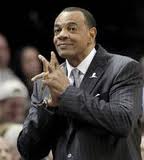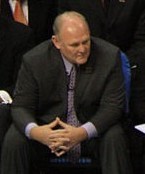 Every professional sport lives by the famous adage, “Coaches are hired to be fired.” It is well known that when things go south, it is the coach and not the players who get the blame and the ax.
Every professional sport lives by the famous adage, “Coaches are hired to be fired.” It is well known that when things go south, it is the coach and not the players who get the blame and the ax.
In the NBA, with 15 players collectively making somewhere north of $60 million in salary and being almost impossible to replace, it is no wonder that the coach and his assistants are the usual fall guys for poor performance. Few jobs carry so much responsibility with such little real authority.
Each season, around a third or less of the coaches get canned for myriad reasons, usually having to do with a team underperforming, losing respect for the coach or in some way embarrassing the ownership. Another reason is some type of power struggle with management over “philosophical differences.”
That means that on average, the entire league has a coaching staff turnover every three to four years. It is a rare thing for an NBA coach to last a long time in one place.
You may look at the NBA Finals and see Gregg Popovich, who has been in San Antonio for 17 years, and Erik Spoelstra, who has been guiding Miami for five years. But they are clearly the exception and not the rule.
Since the end of the 2010-11 season – just two years ago – 21 of the NBA’s 30 teams have made coaching changes. That’s a staggering 70 percent. A dozen changes – 40 percent of the league – have removed coaches since the end of this regular season.
In addition to the alarming amount of changes, what makes this season unique is the number of coaches fired – or the dreaded “not renewed” – after having seemingly terrific seasons.
The Clippers won their first division title with a team-record 56 wins but stumbled in the first round of the playoffs. Vinny Del Negro, the winningest coach in franchise history, was not offered a new contract and thanked right out the door.
The Memphis Grizzlies also won 56 games and made it to the conference finals for the first time. Coach Lionel Hollins had a very successful multi-year run with the team but also has not been renewed.
The Denver Nuggets celebrated as George Karl won Coach of the Year just last month. The Nuggets had the best regular season in their NBA history with 57 wins and made their 10th straight playoff appearance. Karl is one of the most successful coaches in league history but was not offered a contract extension due to the dreaded “philosophical differences.”
It is a rare thing in any pro sport to fire the reigning Coach of the Year. It has happened only once in Major League Baseball and once before in the NBA, also to a coach that had a great season but stumbled in the playoffs. The year was 1966, the team was the Philadelphia 76ers and the coach was Dolph Schayes, my father.
In my career, I played for 14 coaches in 18 seasons. I have seen them go for all kinds of reasons. While the names have changed, the major reasons haven’t.
The Sacrificial Lamb: This is the coach who takes the fall for pretty much any team playing poorly. He is replaced to shake things up or give what is known as a “change of scenery.” This type of firing also is a tool for saving a GM’s job by placing blame “where it belongs.”
My first coach, Tom Nissalke met this fate. A former Coach of the Year, he was with the Utah Jazz in the early 1980s and not very popular with the fans. He was very old school and not a public personality. The team was losing and needed a fresh voice. The team also was struggling at the gate. The coaching duties were assumed by GM Frank Layden, which saved a salary. Plus Frank was a terrific personality, which was needed to relate better with the fans.